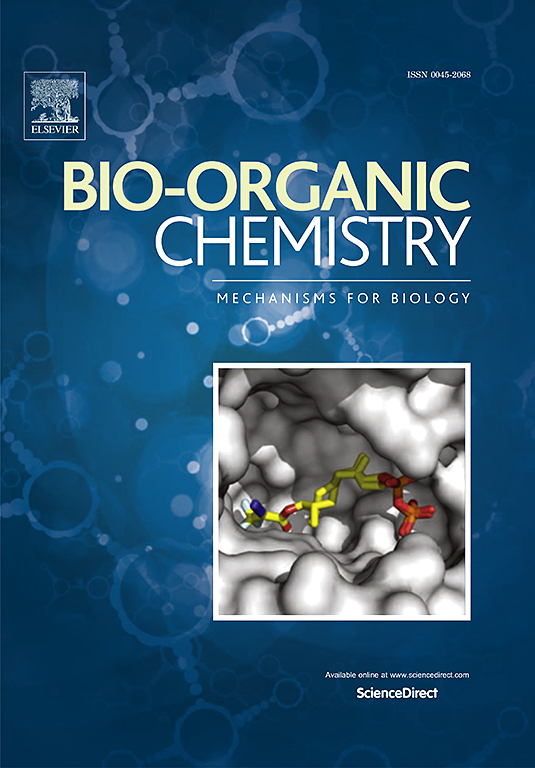Construction of a smart dual-responsive targeted drug nanocarrier for imaging and treatment of breast cancer cells
IF 4.5
2区 医学
Q1 BIOCHEMISTRY & MOLECULAR BIOLOGY
引用次数: 0
Abstract
Breast cancer has become one of the most common cancers worldwide, but the effectiveness of the conventional drug chemotherapy is still restricted. Therefore, precision imaging and targeted therapy against breast cancer cells have become a hot research topic. In this study, a dual-responsive nanocarrier system based on multi-functionalized gold nanoparticles (GNP) was developed for simultaneous diagnosis and treatment of breast cancer cells. The nanoparticles were modified with an aptamer which specifically recognizes MUC-1 protein on the surface of the breast cancer cell MCF-7, achieving precise cellular targeting. Upon entry into the cell, the decrease of pH in the intracellular environment causes the detachment of the i-motif sequence from GNP. Cy5 labeled at the end of i-motif, which is previously quenched by GNP thus restores its fluorescence, achieving the imaging of the cancer cells. Additionally, chemotherapeutic drug gemcitabine (GEM) is covalently attached to GNP through a rationally designed oligopeptide linker CGFLG. Cathepsin B, which is overexpressed in MCF-7 cells, can precisely cleave the CGFLG linker and release GEM to the cells, thereby achieving the targeted drug delivery and treatment. When 4 nM nanocarrier was applied, the inhibition rate of MCF-7 cells was approximately 70 %. This dual-responsive nanocarrier system integrates the targeting, imaging and therapeutic functions in a simple GNP platform. The high targeting efficiency of the nanocarrier reduces the non-specific binding and toxic effects on normal cells, while enhances the toxicity toward cancer cells. Therefore, it may have great prospects in medical applications.

求助全文
约1分钟内获得全文
求助全文
来源期刊

Bioorganic Chemistry
生物-生化与分子生物学
CiteScore
9.70
自引率
3.90%
发文量
679
审稿时长
31 days
期刊介绍:
Bioorganic Chemistry publishes research that addresses biological questions at the molecular level, using organic chemistry and principles of physical organic chemistry. The scope of the journal covers a range of topics at the organic chemistry-biology interface, including: enzyme catalysis, biotransformation and enzyme inhibition; nucleic acids chemistry; medicinal chemistry; natural product chemistry, natural product synthesis and natural product biosynthesis; antimicrobial agents; lipid and peptide chemistry; biophysical chemistry; biological probes; bio-orthogonal chemistry and biomimetic chemistry.
For manuscripts dealing with synthetic bioactive compounds, the Journal requires that the molecular target of the compounds described must be known, and must be demonstrated experimentally in the manuscript. For studies involving natural products, if the molecular target is unknown, some data beyond simple cell-based toxicity studies to provide insight into the mechanism of action is required. Studies supported by molecular docking are welcome, but must be supported by experimental data. The Journal does not consider manuscripts that are purely theoretical or computational in nature.
The Journal publishes regular articles, short communications and reviews. Reviews are normally invited by Editors or Editorial Board members. Authors of unsolicited reviews should first contact an Editor or Editorial Board member to determine whether the proposed article is within the scope of the Journal.
 求助内容:
求助内容: 应助结果提醒方式:
应助结果提醒方式:


